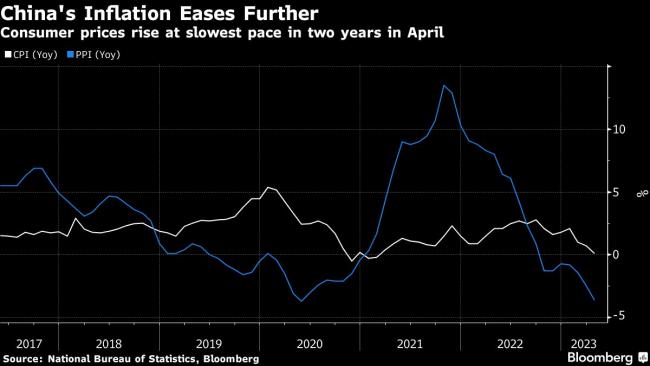(Bloomberg) -- The People’s Bank of China hinted Monday it will keep monetary policy supportive, prompting expectations it may cut the reserve requirement ratio for banks or lower interest rates in coming months.
The central bank pledged in its quarterly monetary policy report to keep the overall amount of money supply and credit in the economy “appropriate,” a slightly more dovish sign. It also dropped the phrase of “not flooding the economy with stimulus” for the first time in more than a year.
Goldman Sachs Group Inc (NYSE:GS) economists said the report suggests more policy stimulus may be on the cards. They expect a 25 basis-point cut in the reserve requirement ratio next month when liquidity demand picks up at end of the quarter. That would help “to boost market sentiment and facilitate overall credit growth,” they said.
Recent economic data raised questions about China’s patchy recovery. A rebound in the services sector has far outpaced still-weak manufacturing activity. Consumer prices barely grew in April, borrowing slumped and imports plunged, adding to concerns about demand.
The PBOC said Monday that inflation was “mild” and may gradually rebound in the second half of 2023, adding that China is not in “deflation.” Instead of repeating that it would “keep a close eye on inflation” like it did in the previous quarterly report, the PBOC only said it would pay attention to the “marginal changes in prices.”
The gap between economic expansion, inflation and broad money growth is a result of a delay in the recovery of demand in China, the central bank said, along with the effect of supportive policies.
So far, the PBOC hasn’t offered much in the way of aggressive stimulus. Earlier on Monday it injected more long-term liquidity into the financial system, but kept a key policy rate unchanged.
Citigroup Inc (NYSE:C). economists said the PBOC could cut the rate on its one-year loans by 20 basis points in the remainder of the year.
“With the initial reopening impulse set to fade, broad-based weak expectations could become self-fulfilling,” the economists including Xiangrong Yu wrote in a note. “Decisive policy actions are necessary to prevent the Chinese economy from sliding into a confidence trap.”
The PBOC said in a special section of its report that the weighted average rate of new loans granted in March was 4.34%, a historically low level.
The central bank noted in that section that it has adopted a cautious approach to making rate decisions in recent years in order to leave room for adjustments. This is because of uncertainty facing the global economy, it added.
As the economy recovers, people are likely to gradually release their precautionary savings, the PBOC said in its report. It also reaffirmed its stance toward implementing forceful and targeted monetary policy, as well as balancing economic growth and price stability.
“Loosening remains the general direction for monetary policy, particularly structural easing with a focus on expanding credit. We can also expect RRR or interest rate cuts,” Guosheng Securities analysts including Xiong Yuan wrote in a note late Monday.
(Updates with comments from economists.)
©2023 Bloomberg L.P.
